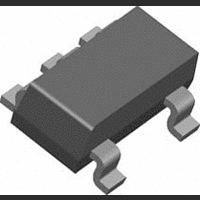LMH6559MF National Semiconductor, LMH6559MF Datasheet - Page 17

LMH6559MF
Manufacturer Part Number
LMH6559MF
Description
IC, CLOSED LOOP BUFF SGL 1.75GHZ SOT23-5
Manufacturer
National Semiconductor
Datasheet
1.LMH6559MA.pdf
(22 pages)
Specifications of LMH6559MF
No. Of Amplifiers
1
Gain Bandwidth
1.75GHz
Slew Rate
4580V/µs
Supply Voltage Range
3V To 10V
Output Current
75mA
Amplifier Output
Single Ended
Operating Temperature Range
-40°C To +85°C
Rohs Compliant
No
Available stocks
Company
Part Number
Manufacturer
Quantity
Price
Part Number:
LMH6559MF
Manufacturer:
NS/国半
Quantity:
20 000
Company:
Part Number:
LMH6559MFX
Manufacturer:
NSC
Quantity:
3 400
Application Notes
To minimize peaking due to CL a series resistor for the
purpose of isolation from the output stage should be used. A
low valued resistor will minimize the influence of such a load
capacitor. In a 50Ω system as is common in high frequency
circuits a 50Ω series resistor is often used. Usage of the
series resistor, as seen in Figure 11 eliminates the peaking
but not the dip. The dip will vary with the particular capacitor.
Using a resistor in series with a capacitor creates in a single
pole situation a 6dB/oct rolloff. However, at high frequencies
the internal inductance is appreciable and forms a series LC
combination with the capacitor. Choice of a higher valued
resistor, for example 500 to 1kΩ, and a capacitor of hun-
dreds of pF’s provides the expected response at lower fre-
quencies.
FIGURE 10.
FIGURE 11.
(Continued)
20064150
20064151
17
USING GROUND PLANES
The use of ground planes is recommended both for provid-
ing a low impedance path to ground (or to one of the other
supply voltages) and also for forming effective controlled
impedance transmission lines for the high frequency signal
flow on the board. Multilayer boards often make use of inner
conductive layers for routing supply voltages. These supply
voltage layers form a complete plane rather than using dis-
crete traces to connect the different points together for the
specified supply. Signal traces on the other hand are routed
on outside layers both top and bottom. This allows for easy
access for measurement purposes. Fortunately, only very
high density boards have signal layers in the middle of the
board. In an earlier section, the formula for Z
as:
The width of a trace is determined by the thickness of the
board. In the case of a multilayer board the thickness is the
space between the trace and the first supply plane under this
trace layer. By common practice, layers do not have to be
evenly divided in the construction of a pcb. Refer to Figure
12. The design of a transmission line design over a pcb is
based upon the thickness of the different internal layers and
the e
supply information about important specifications. For ex-
ample, a nominal 1.6mm thick pcb produces a 50Ω trace for
a calculated width of 2.9mm. If this layer has a thickness of
0.35mm and for the same e
be of 0.63mm, as calculated from Equation 7, a derivation
from Equation 6.
Using a trace over a ground plane has big advantages over
the use of a standard single or double sided board. The main
advantage is that the electric field generated by the signal
transported over this trace is fixed between the trace and the
ground plane e.g. there is almost no possibility of radiation
(seeFigure 13).
r
of the board material. The pcb manufacturer can
FIGURE 12.
r
, the trace width for 50Ω should
0
was derived
www.national.com
20064154
(6)
(7)











